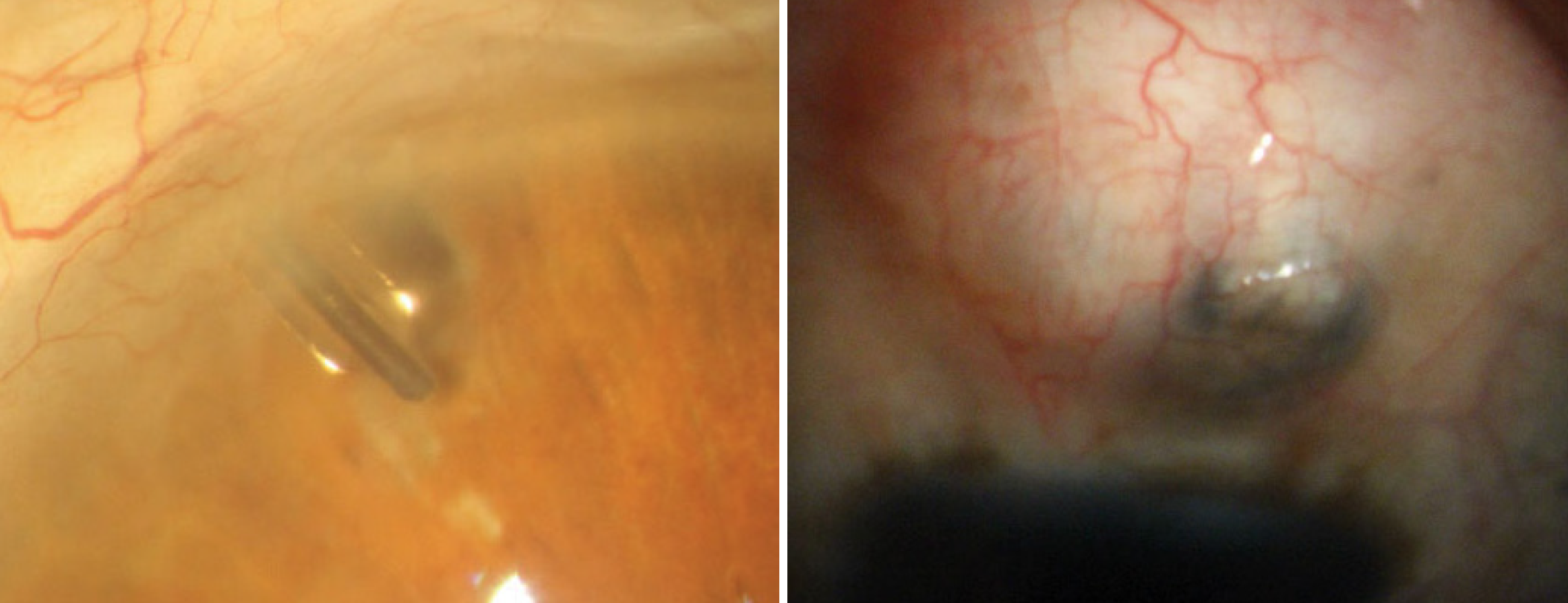 |
| Tube shunt use (left) for advanced glaucoma reduced IOP by 12.3mm Hg in one year while trabeculectomy (right) lowered it by 11.8mm hg, a recent data analysis shows. Click image to enlarge. |
Real-world data can augment the generalizability of results obtained from carefully curated clinical trial populations. In 2007 the multicenter, randomized Tube Versus Trabeculectomy (TVT) Study results were published, changing glaucoma care paradigms. To see how the original study results are applicable to current practice patterns, researchers conducted an updated TVT study using the IRIS Registry of electronic health record data. The results, published recently in the American Journal of Ophthalmology, indicate that the IRIS Registry data can be a valuable tool for predicting real-world outcomes.
In the retrospective cohort study, the researchers used IRIS Registry data (2013-2017) to identify eyes with one year of follow-up that had undergone either a tube shunt or trabeculectomy procedure after a previous trabeculectomy and/or cataract surgery. They compared these outcomes (TVT IRIS) with those from the TVT randomized controlled trial (TVT RCT), which compared a Baerveldt implant to trabeculectomy.
In the TVT IRIS cohort, similar reductions in IOP from baseline to one year were seen in the tube (n=236, 56.3%) and trabeculectomy (n=183, 43.7%) groups. The tube group decreased from a mean IOP of 26.6mm Hg at baseline to 14.3mm Hg at one year, and the trabeculectomy group decreased from 25.3mm Hg at baseline to 13.5mm Hg at one year.
The researchers noted that the trabeculectomy groups in both studies had similar one-year pressure reductions, but the randomized trial cohort showed that significantly fewer medications were used at all time points. Greater differences were seen in the tube groups from both studies, in terms of mean IOP and number of medications used. The researchers assumed this was due to the inclusion of valved tubes in the IRIS Registry cohort. This cohort also had more reoperations in both tube and trabeculectomy groups, which may be due to more advanced disease or safety improvements in the procedures.
“The comparable clinical efficacy between the TVT RCT and TVT IRIS trabeculectomy groups suggests that the IRIS Registry can be used to accurately assess real-world outcomes of surgical interventions,” the researchers concluded in their American Journal of Ophthalmology paper. “Both RCTs and real-world studies using electronic health record data provide valuable information for informing surgical outcomes and should be used together to improve patient care in the future.”
Sun CQ, McSokley MJ, Lum F, et al. Tube Versus Trabeculectomy IRIS Registry study: one-year secondary treatment outcomes. Am J Ophthalmol 2023. [Epub ahead of print.] |

